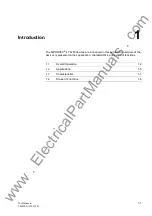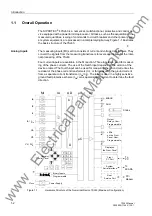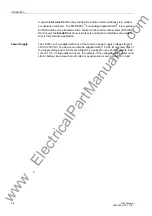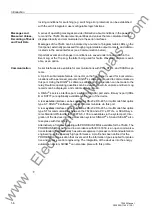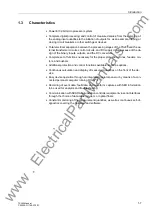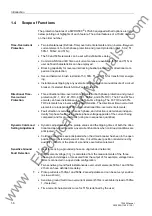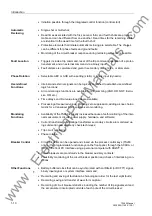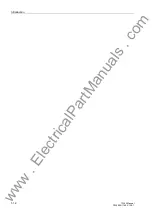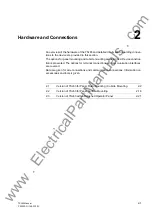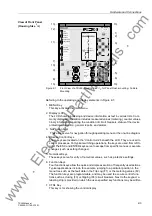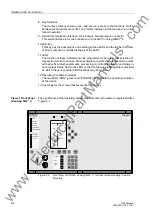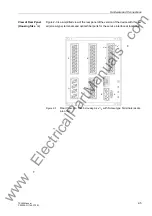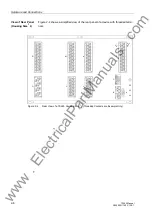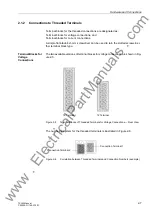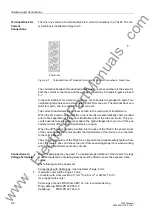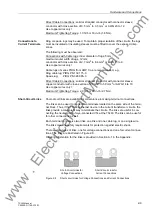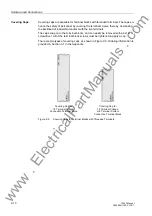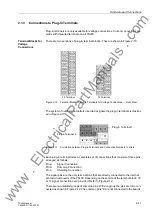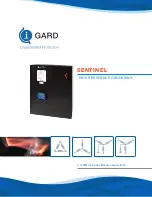
Introduction
1-8
7SJ63 Manual
C53000-G1140-C120-1
1.4
Scope of Functions
The protection features of a SIPROTEC
®
4 7SJ63 equipped with all options are listed
below pointing out highlights of each feature. The actual features of a 7SJ63 depend
on the order number.
Time-Overcurrent
Protection
•
Two instantaneous (Definite-Time) overcurrent elements and an inverse-time over-
current element, for both phase protection and ground protection (50-1, 50-2, 51,
50N-1, 50N-2, and 51N);
•
The 50 and 50N elements can be set with definite-time delay;
•
Common ANSI and IEC time overcurrent curves are available for 51 and 51N, or
user defined characteristics can be employed.
•
Blocking capability for reverse-interlocking busbar protection, or directional com-
parison line protection;
•
Second harmonic inrush restraint of 50, 50N, 51, and 51N for transformer energiz-
ing;
•
Instantaneous tripping by any overcurrent element upon manual closure of a circuit
breaker, if selected (Switch-Onto-Fault-Protection).
Directional Time-
Overcurrent
Protection
•
Three directional time-overcurrent elements for both phase protection and ground
protection (67-1, 67-2, 67-TOC, 67N-1, 67N-2, and 67N-TOC). The 67 and 67N el-
ements can have instantaneous or definite-time tripping. The 67-TOC and 67N-
TOC elements have inverse-time characteristics. The directional time-overcurrent
elements are independent of the non-directional time-overcurrent elements;
•
Fault direction is calculated for each phase, and direction is determined indepen-
dently for phase faults (using phase-phase voltage opposite of the current being
compared) and for ground faults (using zero sequence quantities).
Dynamic Cold Load
Setting Adjustment
•
Dynamic adjustments of the pickup values and the tripping times of both the direc-
tional and non-directional time-overcurrent functions when cold load conditions are
anticipated;
•
Cold load conditions are anticipated when the circuit breaker has been in the open
position for an extended period of time. Circuit breaker position is determined by
auxiliary contacts or the state of a sensitive overcurrent element.
Sensitive Ground
Fault Detection
•
Ideal for sensing a grounded phase on ungrounded networks;
•
Displacement voltage (3V
0
) is calculated from the measurements of the three
phase-ground voltages, or measured from the output of, for example, voltage trans-
formers connected in a open delta configuration;
•
Two sensitive ground fault instantaneous overcurrent elements 50Ns-1 and 50Ns-
2 that can have definite time delay;
•
Pickup currents of 50Ns-1 and 50Ns-2 are adjustable and can be set very sensitive
(as low as 3mA);
•
Sensitive ground fault time-overcurrent element 51Ns is available instead of 50Ns-
1, if selected;
•
Time-current characteristic curve for 51Ns is defined by the user;
www
. ElectricalPartManuals
. com








